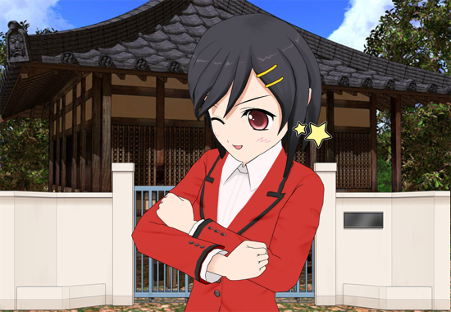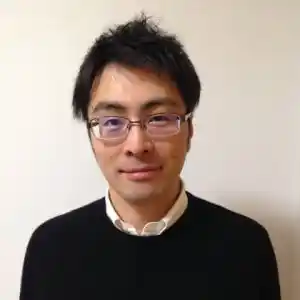Research News:“Moe” Than Just Advertisement: Reflections on the Use of Anime Characters for Tourism Promotion
May 17, 2023
A recent study has found that the use of anime “moe” characters in tourism promotion may have negative effects
The use of anime characters in marketing is common in Japan. The strategy exploits people’s affection, or “moe,” toward characters to sell goods and services. A recent study from Doshisha University investigated the use of moe characters in regional promotion content for the Chita Peninsula of Japan. The study found that moe-based promotion strategies encourage simplistic views of a region’s rich history, objectification of women, and harmful heteronormative notions of masculinity.
In Japan, advertisements featuring anime characters are often used to sell goods and services. Marketing strategies that use anime characters exploit people’s feelings toward them. The Japanese slang “moe”, derived from the Japanese intransitive verb “moeru,” meaning to sprout, has come to represent people’s affection for anime characters, sometimes also called “moe characters.”
Marketing campaigns employing moe characters have caused controversy due to how they depict women, especially in the context of “moe-okoshi,” or moe-based regional tourism promotion. In this regard, a study was conducted recently by Associate Professor Yasuhito Abe of the Department of Media, Journalism, and Communications at Doshisha University, Japan, to investigate the Executive Committee of Daughters of Chita, or CMJI (Chita Musume Jikkō Iinkai, in Japanese), a project for promoting tourism in the Chita Peninsula of Japan. The study was made available online on March 23 2023, and published in Volume 26, Issue 3 of the International Journal of Cultural Studies.
“I sought to gain a deeper understanding of the social and cultural conditions under which public sectors promote moe practices in collaboration with private sectors within the realm of regional promotion,” explains Dr. Abe.
Founded in 2010, CMJI employs content featuring moe characters to promote regional tourism. Most of the content produced under the CMJI project revolves around a group of young female characters, “the daughters of Chita,” each of whom represents either a city or town in the Chita Peninsula. In YouTube promotional videos produced by CMJI, moe characters introduce notable locations in the Chita Peninsula by suggestively interacting with the viewers. For instance, a CMJI YouTube video that Dr. Abe scrutinized features a virtual date with a young girl called Mihama Ren, who introduces viewers to Mihama town as a prime location for dating.
Moe characters cater to a predominantly male audience and often perpetuate a harmful way of depicting women as sexualized objects, infamous as the “male-gaze.” In the study, Dr. Abe explored two aspects of CMJI’s tourism promotion campaign: how it depicted regions in the Chita Peninsula as “looked-upon” objects, and how it encouraged moe-consumption among its audience.
He found that although CMJI garnered significant attention with the use of moe characters, the practice tends to reduce a city or town’s rich history to a simplistic narrative that targets certain audiences’ feelings toward moe characters. “Moe-okoshi practice may contribute to the colonization of each area through the embedded male gaze, thus turning local spots into dating spots and constraining the scope of regional promotion to a matter of visibility for particular audiences,” notes Dr. Abe.
He also found that the use of moe-elements in the CMJI project is ethically questionable since it depicts young women as looked-upon objects and promotes heteronormative notions of masculinity among its audience. Moreover, moe-based marketing campaigns run the risk of alienating a subsection of their audience who find the ideals of moe unacceptable. This study is one of the first to look at moe practices employed in marketing from a critical perspective to examine their long-term and far-reaching effects. Since regional promotion strategies employing content similar to moe can have negative effects, Dr. Abe concludes that “Diverse regional promotion practitioners, local governments, and mainstream media outlets in Japan and beyond could emphasize the concept of gender in order to critically evaluate and shape the development of regional promotion strategies.”
The study is an important contribution to understanding how gendered dimensions can not only impinge upon the effectiveness of regional promotion but also involve inherent ethical issues. It makes a strong argument for further research to acquire a better understanding of moe-related regional promotion and its unintended societal consequences.

Moe characters have long been employed in product marketing and tourism promotion in Japan
Now, a study has found that the use of these characters may perpetuate harmful stereotypes about women and promote heteronormative notions of masculinity.
Image courtesy: jsks from Wikimedia Commons
Image license: CC0 1.0.
Image link: https://commons.wikimedia.org/wiki/File:Red_suit_anime_girl_temple.png
Reference
| Title of original paper | More than just the regional promotion in Japan: The case of Chita Musume |
| Journal | International Journal of Cultural Studies |
| DOI | 10.1177/13678779231160568 |
Profile

Dr. Yasuhito Abe is currently an Associate Professor at Doshisha University. Professor Abe has over 11 years of research experience and has published 33 articles in various disciplines like cultural Studies, communication studies, media studies, citizen science, popular culture etc. He obtained his PhD from the University of Southern California’s Annenberg School for Communication and Journalism and has previously worked at Komazawa University. Professor Abe’s academic interests include Media Communication, Citizen Media, Data Activism, Citizen Science, Science Communication, Environmental Communication, Collective intelligence, Journalism, Popular Culture, Populism, Fandom etc.
Yasuhito Abe
Associate Professor , Faculty of Social Studies Department of Media, Journalism and Communications
Media contact
Organization for Research Initiatives & Development
Doshisha University
Kyotanabe, Kyoto 610-0394, JAPAN
CONTACT US
